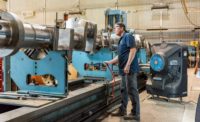Although they compose only six percent of the total U.S. workforce, construction workers accounted for 36 percent of all occupational heat‐related deaths from 1992 to 2016 – and climate change may have something to do with it. That’s one of the key findings from new research from the Center for Construction Research and Training (CPWR).
Heat is a severe hazard for construction workers around the world and may be worsening as a result of climate change. The authors analyzed heat‐ related deaths in the Census of Fatal Occupational Injuries to examine this type of death in relation to time, region, and temperature and to explore a possible association with climate change.
Other findings:
- increasing summer temperatures in the contiguous U.S. were associated with higher heat-related death rates
- the annual number of heat-related deaths in construction rose significantly over time
- Hispanics – in particular, workers born in Mexico – had a higher risk of heat‐ related death
- cement masons were 10 times more likely to die from heat than the average construction worker
- roofers and helpers were seven times more likely.
Interventions such as acclimatization, ready access to water, and rest breaks could help reduce the number of heat-related fatalities in the industry. The authors note that enhanced surveillance, and improved regulations and enforcement should accompany broader efforts to combat global warming.
The construction industry itself can help reduce global warming through increased implementation of green building principles.
Heat‐related deaths among construction workers in the United States. Xiuwen Sue Dong, Gavin H. West, Alfreda Holloway‐Beth, Xuanwen Wang, and Rosemary K. Sokas. American Journal of Industrial Medicine, 2019.


